Tulips can offer a wide range of bright and vibrant flowers in your garden during spring. They are low-maintenance plants. But tulips dying before their time is not appreciated. Therefore, growers have to observe them regularly to understand if they are doing well.
Shallow planting, insufficient light or water, pests, and diseases are some of the core causes behind a dying tulip. With quick identification and appropriate action, you can revive the tulips back to health.
In this article, we shall understand how you can save a dying tulip plant.
To save a dying tulip:
- Inspect the plant for possible signs of problems.
- Correct the watering schedule. Only water the plant when the topsoil feels a little dry. However, don’t keep them thirsty for long.
- Move the plant to a bright spot or remove anything that is blocking the sunlight. With that said, avoid the intense sun if you live in warmer regions.
- Fertilize the tulips with a balanced fertilizer once a month during the growing season. Don’t overfeed them.
- Look out for possible pest infestation and use neem oil to prevent it in the first place.
However, the tulip flower and the leaves will die naturally at one time. But, if the tulips die prematurely, then the environmental and cultural problems are to be blamed. Let’s understand the reasons behind dying tulips and how to revive them back.
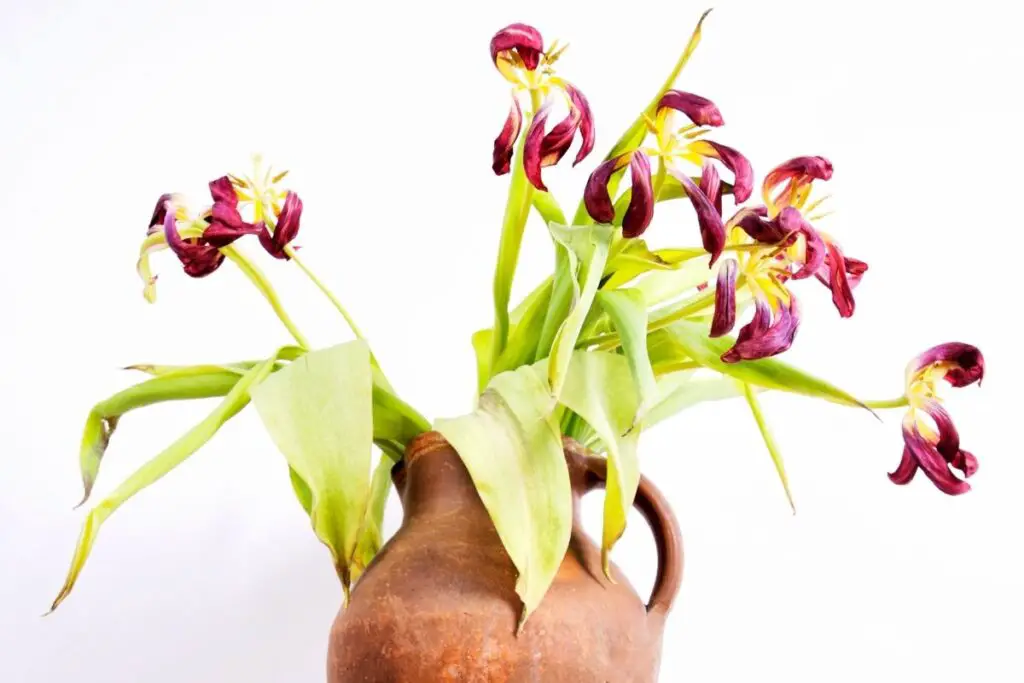
Why do tulips die?
Tulips die because they have a short lifecycle after growing above the ground. Their flowers last for only 2 to 3 weeks.
The flowers remain alive depending on the weather. The flowers can last for only a few days in hot weather.
There are many things to be considered while growing tulips in a garden. Some points may seem minor, but they can make quite a big difference in your tulips and help them last longer.
Let’s see why the tulips are dying.
Shallow planting
Usually, you should plant the tulip bulbs 6 to 8 inches deep. Some recommend planting them 10-12 inches deep instead of digging and storing them.
Following a proper depth protects the bulbs from sudden weather changes like extreme hot climate, strong winds, heavy rains, hail, or dry weather.
The cold and dry winters can cause the tulips to rise, especially if you planted the bulbs in the previous fall. The bulbs planted too shallow will easily succumb to such bad weather conditions.
Even if the bulbs are planted properly, pests like rabbits and rodents will dig and bring them to a shallow place. That’s why you need to plant them deep enough. But not too deep. You can create a fence around your tulip bed too.
Also read: Should Tulips Be Planted In Groups? (How To+Care)
Pests and diseases
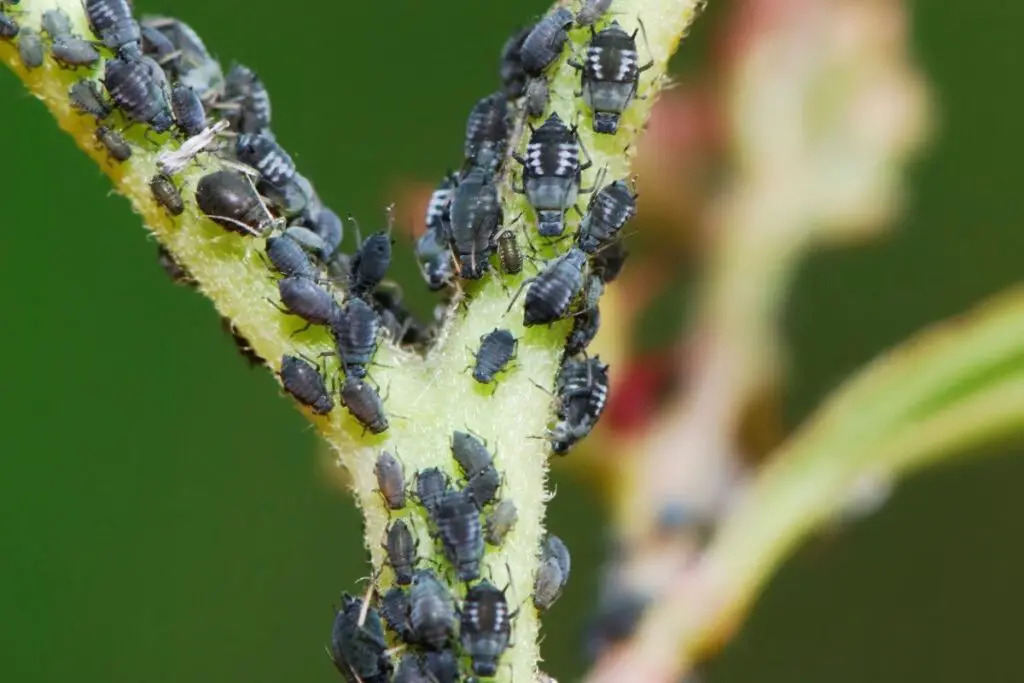
Pests like aphids, spider and bulb mites, snails, and slugs are common pests found in tulips. They will feed on the plant and plant-sap and kill them before their natural death.
Aphids are the most common ones. They suck out all the saps from the stems and leaves of the plant, thus making the tulips lifeless.
Bulb mites feed on the bulbs. So without healthy bulbs, the plant won’t survive for long. An unhealthy and damaged bulb will never remain alive for long.
Snails and slugs love to feed on the leaves. You will find holes in the leaves. The leaves are their snacks.
Snails and slugs tend to hide on the undersides of the leaves or beneath the ground. When night appears, they come out and feed on the plant.
Another kind of pest found in the tulips is stem and bulb eelworm, or Ditylenchus dipsaci.
In the beginning, you will see symptoms of their attack like deformed and stunted leaves, yellowing of the leaves at the tips, and roughness under the leaves.
Botrytis blight, tulip fire, and bacterial soft rot are the kinds of diseases found in tulips.
Once they are present in your tulips, they won’t take much time to kill your plant. They are very much attracted to damp, hot and humid conditions. The best solution is to prevent them.
Also read: Bugs On Tulips: (Common Pests, Identification+How To Get Rid)
Poor drainage system
Poor drainage will make the soil bed damp for prolonged periods which can cause root and bulb rots. The leaves will turn yellow prematurely in soggy conditions.
Once the rotting starts, it would be very difficult or even impossible to revive the plant back.
The only way to save the plant is through daily checking, quick treatment, and prevention.
To avoid a prolonged damp soil bed, you can add a layer of mulch or compost to the soil bed. This will help in the absorption of excess moisture.
Also read: What Kind Of Soil Is Good For Tulips? (Best Soil Mix)
Overwatering
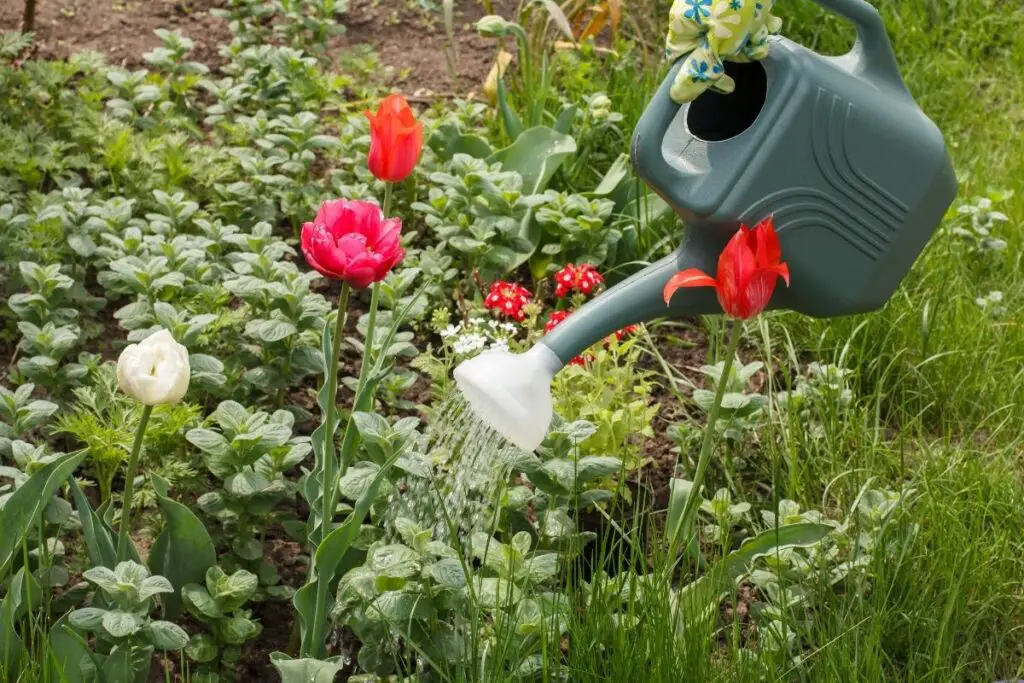
Related to the previous point, one cause behind overwatering is poor water drainage from the soil bed. Other reasons are watering the soil bed too often or watering in summer.
Tulips only need to be watered once a week with 1-inch of water. You need to check the soil’s moisture level before watering on other days. If the top inches of the soil bed dries up, you can again water it.
Tulips remain dormant in the summers. So, they won’t take up any water in that time. Watering the plant in summer can lead to overwatering and even basal rot.
Also read: How To Save Overwatered Tulips? (Possible Signs, Causes & How To Fix)
Looking for gardening supplies? We have tested 100's of products before recommending them to you guys. Check out our best pick below:
| Image | Gardening Supplies | Best Price? |
|---|---|---|
 Top
Top Top
Top | Raised Garden Bed Kit | Check On Amazon |
 | XLUX Soil Moisture Meter, Plant Water Monitor, Soil Hygrometer Sensor for Gardening, Farming, Indoor and Outdoor Plants, No Batteries Required | No Results |
 Top
Top Top
Top | 82 Pcs Garden Tools Set and Extra Succulent Tools Set | Check On Amazon |
 | Joeys Garden Expandable Garden Hose with 8 Function Hose Nozzle, Lightweight Anti-Kink Flexible Garden Hoses, Extra Strength Fabric with Double Latex Core, (50 FT, Black) | No Results |
 Top
Top Top
Top | Dual Chamber Compost Tumbler | Check On Amazon |
 Top
Top Top
Top | Sunnyglade Plant Stakes | Check On Amazon |
 Top
Top Top
Top | Organic Cold Pressed Neem Seed Oil | Check On Amazon |
 Top
Top Top
Top | Mighty Mint Gallon :-Insect and Pest Control Peppermint Oil | Check On Amazon |
 Top
Top Top
Top | Scotts DiseaseEx Lawn Fungicide | Check On Amazon |
 Top
Top Top
Top | Jacks Classic 20-20-20 All Purpose Fertilizer | Check On Amazon |
 Top
Top Top
Top | 30,000 Seeds Pollinator Attracting Wildflower Mixture | Check On Amazon |
 Top
Top Top
Top | Survival Vegetable Seeds Garden Kit-Over 16,000 Seeds | Check On Amazon |
Lack of proper sunlight
Tulips will need full sunlight for the healthy growth of leaves and flowers and prominent colors. An insufficient amount of sunlight will affect the impression of the tulips.
The plant will not grow well, the soil may take a lot of time to dry up, and the flowers will not appear to your expectations.
In such conditions, the tulips will soon start dying. The leaves will start becoming very pale and yellow. To revive them, you need to transplant them to a site with full sunlight.
Also read: How Much Sunlight Do Tulips Need? (Tulip Light Needs)
Dehydration
While trying to save the plant from overwatering, don’t end up underwatering your tulips. Just like tulips don’t like damp soil. Similarly, they will not enjoy prolonged droughts either.
First, the leaves will turn yellow, then dry and crispy. The leaves may die prematurely in such dry conditions. Without appropriate water once a week, the bulbs too will begin to die due to dehydration.
Also read: How Often Do Tulips Need To Be Watered? (Tulip Watering Needs )
Natural death
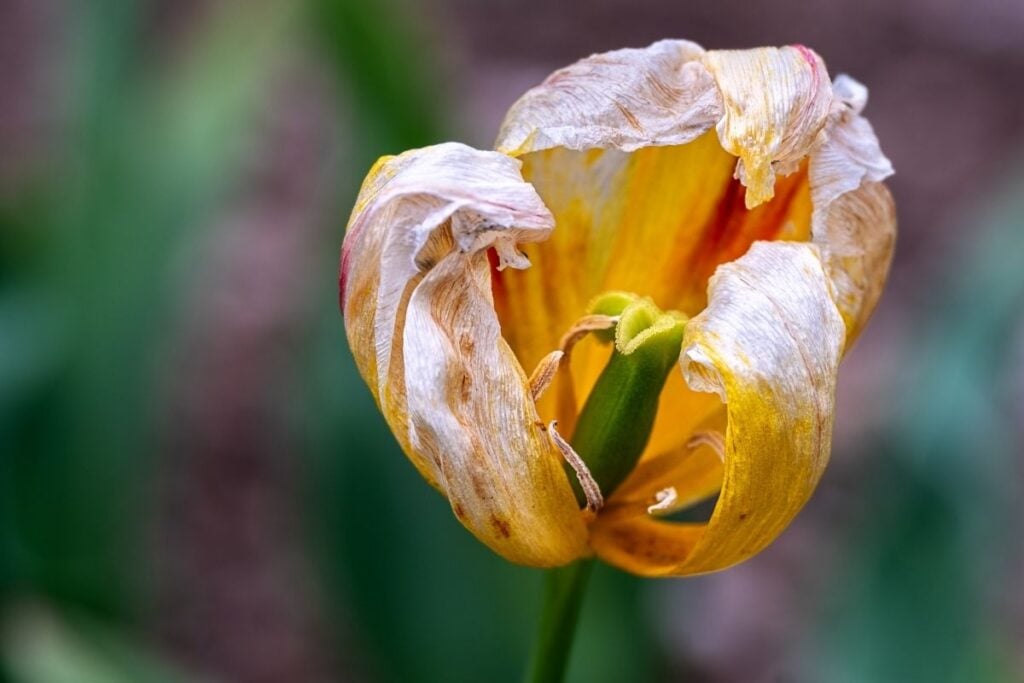
If you are a beginner in growing tulips, you should know that tulips bloom during the spring and it will die after a few weeks. Soon after the flower dies, the leaves too will start dying after a few weeks.
So, you don’t need to worry when you find the tulips dying after they have finished blooming after spring. This dying is a natural cycle, and you can’t revive this condition.
How do you revive a dying tulip?
You can do nothing with their natural death. But, in the case of other conditions, the situation needs to be amended if the damage level is less or in the initial stage.
Let the tulips have an adequate amount of sunlight.
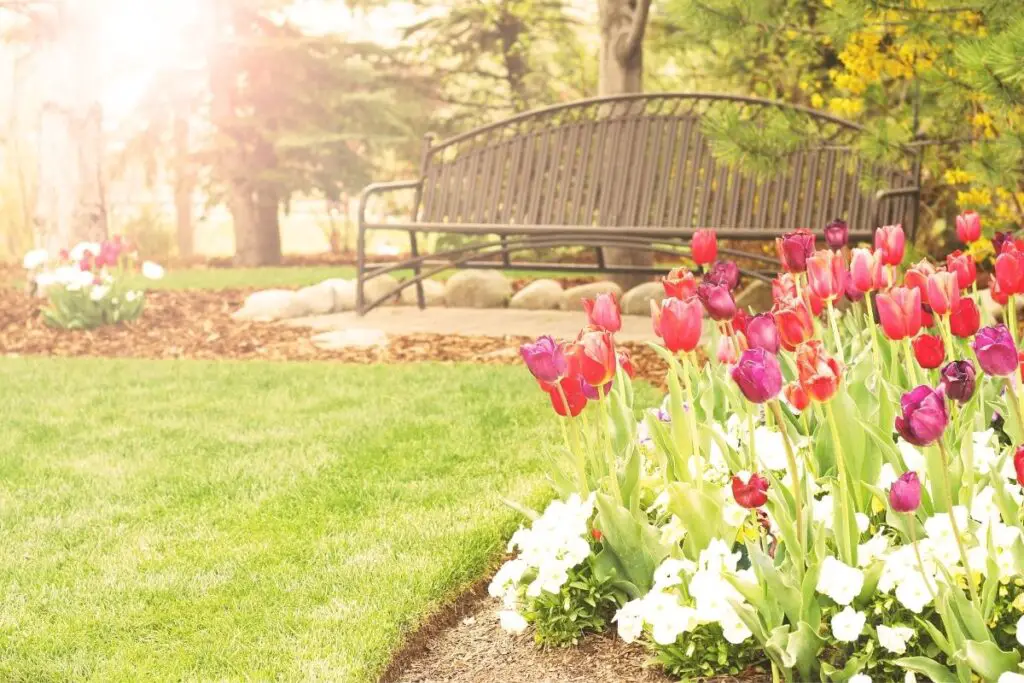
A good amount of sunlight gives energy to the leaves through photosynthesis. This energy further gets taken up by bulbs for growing and flowering. Thus sufficient sunlight is vital to keep the tulips alive and healthy.
If your tulips show signs of dying and the reason is a shady place, you need to transplant them to a sunny area. Choose a spot where the site doesn’t have any blockages and receives full sun.
But too much sun is not good for them.
The tulips indeed require full sunlight for thriving. That doesn’t mean they will tolerate harsh rays of the sun during the hot afternoon summers.
Too hot climate can hit during spring suddenly. This will be harmful to the plants.
A sudden hot climate will blast the tulip buds and turn the leaves yellow before time. As the bulbs get all their energy from the leaves, a dead leaf won’t give the bulbs the energy they need.
You can create a temporary shade during the hot climate. This shade can protect them at least from harsh direct sunlight.
Avoid overwatering
If your tulip soil bed has become too wet, stop watering them immediately. For the next watering, wait until the top 1-inch soil dries completely. Generally, tulips will only need 1 inch of water once a week.
This will keep them moist evenly. Tulips require much less water compared to other plants.
Avoid watering during the summers. Tulips remain dormant in the summers. As a result, they will not take up any water or nutrients at that time.
Watering tulips during dormancy will only kill the plant by basal rot.
This makes them a low-water plant. Where most plants need more water during summers, tulips don’t need water at all.
Avoid saturated soil
A soil that remains wet most of the time will be harmful to the tulips. This can cause the bulbs to rot. A prolonged damp site is under an overhanging roof where rainwater runs and falls over the ground.
When you see your tulips are dying because of such damp conditions, you have to transplant them to a sunny spot. It will help dry up the bulbs quickly, and tulips can be back to their health.
Give the tulips space to grow well.
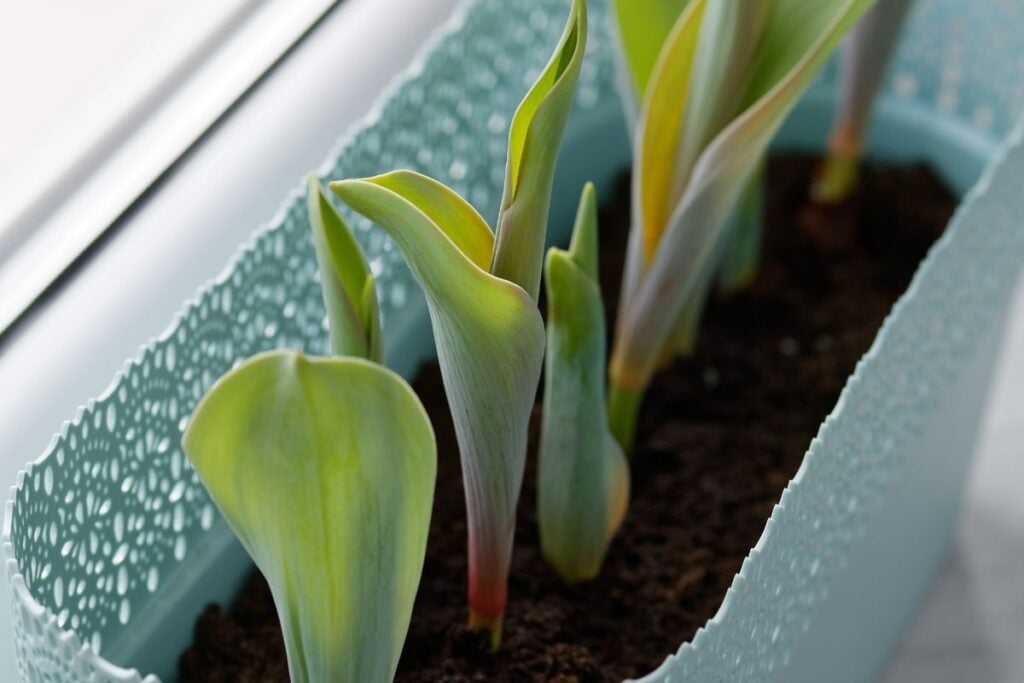
The bulbs planted to close will multiply and become overcrowded after a few years. When they get overcrowded, they stop flowering, and they will fight for nutrients and fail to survive.
Check out the bulbs when you find that the plant has stopped its growth and the plant stopped functioning.
If they are overcrowded, you have to divide them and plant them maintaining a reasonable distance between each bulb. This will provide enough space for them to spread and multiply.
You can revive your plant back from dying.
Maintain a good planting depth
As I said earlier, shallow planting of the bulbs will destroy the bulbs because of strong winds, sudden harsh temperatures, and hail.
If your tulip faces any situations, you need to dig up and plant them again at a proper depth.
But do this when they are dormant. Digging the plant in their growing season will disturb their development.
You need to plant the bulbs 6 to 8 inches deeper in the ground. While planting the bulbs, if you decide to keep them in the ground instead of storing them indoors, you can plant them a little deeper, like 10 inches.
However, you will always have the option of digging them up after flowering after spring. Maintaining an ideal depth at the beginning will prevent the plant from dying due to shallow planting.
Healthy soil
Healthy, fertile, and well-drained soil will save the plant from dying.
If the soil bed is not having proper drainage and you find your plant suffering from overwatering conditions, add a layer of mulch. This will absorb the excess moisture and save your plant from dying further.
If the soil is not fertile, don’t worry. This mulch will, later on, break down in the soil. When it gets mixed with the soil, it will be more nutritious. Healthy and fertile soil will always help revive the plant and prevent further deaths.
Pests and diseases

Pests and diseases should not spread too much in the tulips. An excessive infestation will make the plant impossible to revive back.
Observing the plant daily and taking immediate steps after witnessing any sign of infestation will stop them from spreading. The plant can revive back soon within a few weeks.
For treating pests like aphids and spider mites, you can use neem oil and some insecticidal soap to get rid of them.
You can shower the plant very well with a garden hose to remove them from the plant. You can also handpick them.
For the natural method, you can release ladybugs to get rid of the aphids. You have to set a trap for slugs and snails to discard them.
You can use a small can filled with beer and keep them under the plant. They will get attracted by the smell, fall into the can and drown in the beer.
To restore them, you have to isolate the diseased plant and treat it with a fungicide. In severe conditions, if the bulbs get damaged by any diseases like tulip fire, you have to dig them up and discard them.
If the bulbs are affected less, you can soak them in warm water and fungicide solution. This might help in reviving the bulb.
Prevention is the best cure for fungal infections. These diseases will be identified by mushy bulbs or black spots on the bulbs. When you find such bulbs, discard them.
Deadheading
This is done to keep the plant strong and allow its blooms to come back each year.
When the flower dies, they go for seeds. The bulbs fail to get enough energy from the plant for that. These bulbs won’t show good results next year.
Eventually, the plant will not be strong enough, and they might be susceptible to pests and diseases and die soon.
Deadheading will help the plant store the energy from making seeds. This energy gets consumed by the bulbs from the foliage. It will encourage them to grow vigorous plants and healthy blooms.
Fertilize only during spring and fall
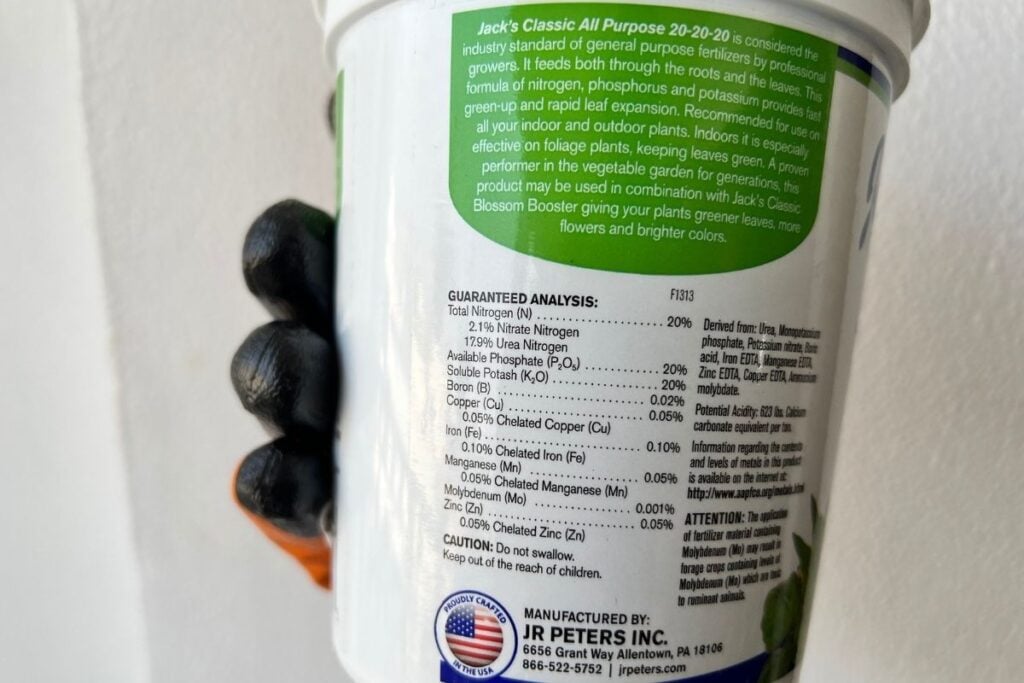
Tulips are also low feeders. They don’t require fertilizer to that extent because their bulbs already hold a lot of nutrients. Over-fertilizing them will only kill the plant.
Fall feeding is done during the planting time. But, you can fertilize them during the spring and fall. Fertilizing the bulbs during the fall gives the bulbs some extra booster to bloom profusely in the following spring.
Spring feeding gives both the foliage and bulbs extra booster to grow healthy. When the leaves get a booster, the bulbs too will get it.
Fertilizing prevents the plant from suffering any nutrient deficiency. You can either use an all-purpose balanced fertilizer or a bulb fertilizer to give them a boost. For organic fertilizer, you can opt for compost or mulch.
A healthy and nutritious plant will be hard to receive stress or death.
Final words
Tulips are very easy to grow. You will not face much hassle while growing them because they can look after themselves. They only need full sunlight, 1-inch water per week during the growing period, temperature around 45 to 60°F, and fertilizer once during the fall and again in spring.
As their bulbs hold a lot of nutrients, they don’t require fertilizing like other plants. Fertilizing once during the fall and next in spring gives them extra fuel to avoid nutrient deficiency.
Watch out for pests and take quick action whenever you find any sign of them. Avoid overwatering, summer watering, underwatering, and over-fertilizing to keep them from dying. This will help in reviving the plant quickly.
Also read:
Source: Wikipedia, North Dakota Stae University, The Royal Horticultural Society.

Im trying to save my tulip bulbs from valentines. If I repot them do they need to be indoors or outdoors during summer and winter
Hi Amanda,
After the tulips have finished blooming, allow the leaves to die back naturally, as this helps the bulb store energy for the next season. Once the foliage has yellowed, you can lift the bulbs and store them in a cool, dry place over the summer. When replanting in the fall, place them outdoors in well-draining soil with full to partial sunlight. Tulip bulbs require a period of cold dormancy, so they should be left outdoors during the winter. In areas with very harsh winters, ensure they are planted at the correct depth, or consider mulching to provide extra protection.
Hope it helps!